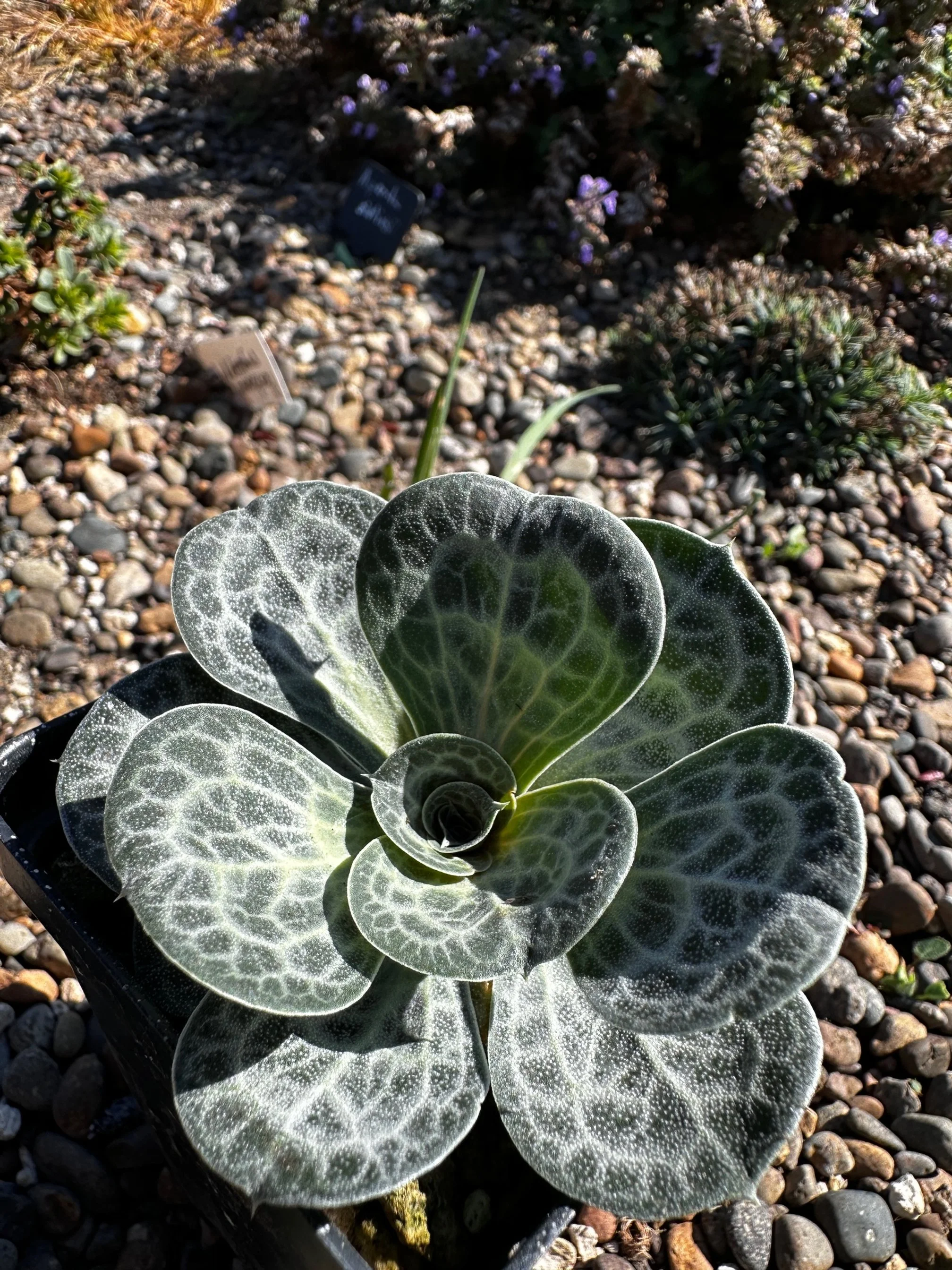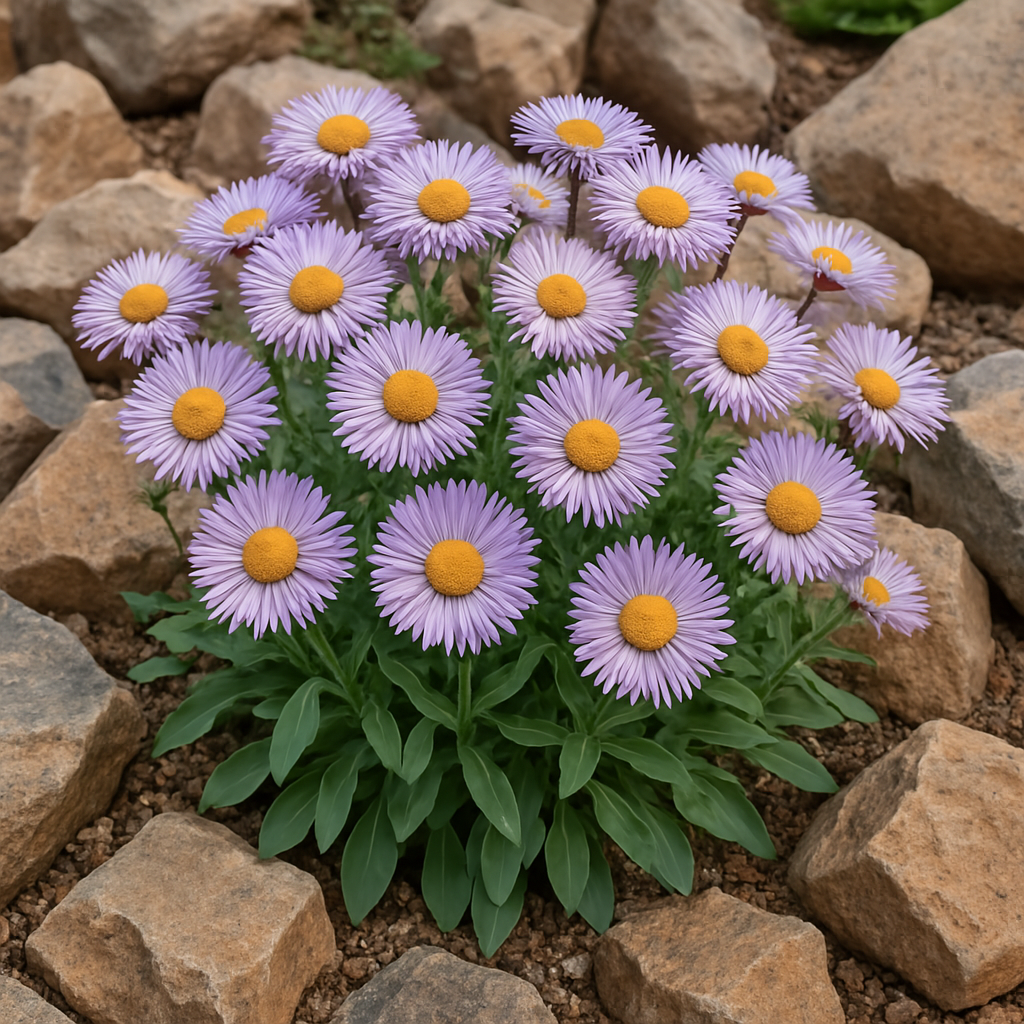
Bukiniczia cabulica
A true rarity from the mountains of Afghanistan and Pakistan, Bukiniczia cabulica is a monotypic member of the Plumbaginaceae, grown as much for its striking foliage as for its flowers. In its native range it inhabits exposed limestone slopes and screes, where drainage is perfect and rainfall scarce, surviving as a long-lived rosette in one of the world’s harshest alpine habitats.
The plant forms a flat, architectural rosette of silver-green leaves covered in a fine down, each leaf elegantly narrow and tapering to a point. After several years, mature plants send up tall stems topped with clouds of delicate pink to rose-lavender flowers, providing a breathtaking contrast to the rigid geometry of the basal rosette. Like many monocarpic alpines, it dies after blooming, but not before scattering seed to establish future generations.
In cultivation, Bukiniczia cabulica demands full sun, a scree-like, sharply drained soil, and protection from winter wet. It is best placed in a crevice garden, trough, or raised scree where its bold rosette can be displayed as a living sculpture. Hardy to USDA zone 5 with dry conditions, it resents excess moisture but thrives in the dry, lean soils that mimic its native mountains.
Still seldom seen outside specialist alpine collections, Bukiniczia cabulica offers the discerning gardener a living work of art—at once austere and spectacular, with a dramatic floral finale.
A true rarity from the mountains of Afghanistan and Pakistan, Bukiniczia cabulica is a monotypic member of the Plumbaginaceae, grown as much for its striking foliage as for its flowers. In its native range it inhabits exposed limestone slopes and screes, where drainage is perfect and rainfall scarce, surviving as a long-lived rosette in one of the world’s harshest alpine habitats.
The plant forms a flat, architectural rosette of silver-green leaves covered in a fine down, each leaf elegantly narrow and tapering to a point. After several years, mature plants send up tall stems topped with clouds of delicate pink to rose-lavender flowers, providing a breathtaking contrast to the rigid geometry of the basal rosette. Like many monocarpic alpines, it dies after blooming, but not before scattering seed to establish future generations.
In cultivation, Bukiniczia cabulica demands full sun, a scree-like, sharply drained soil, and protection from winter wet. It is best placed in a crevice garden, trough, or raised scree where its bold rosette can be displayed as a living sculpture. Hardy to USDA zone 5 with dry conditions, it resents excess moisture but thrives in the dry, lean soils that mimic its native mountains.
Still seldom seen outside specialist alpine collections, Bukiniczia cabulica offers the discerning gardener a living work of art—at once austere and spectacular, with a dramatic floral finale.















